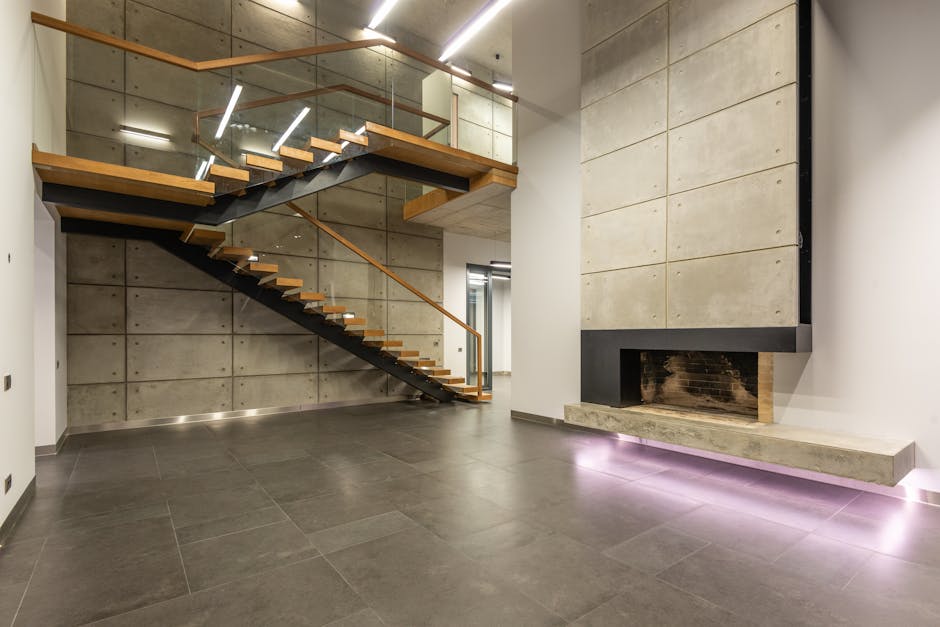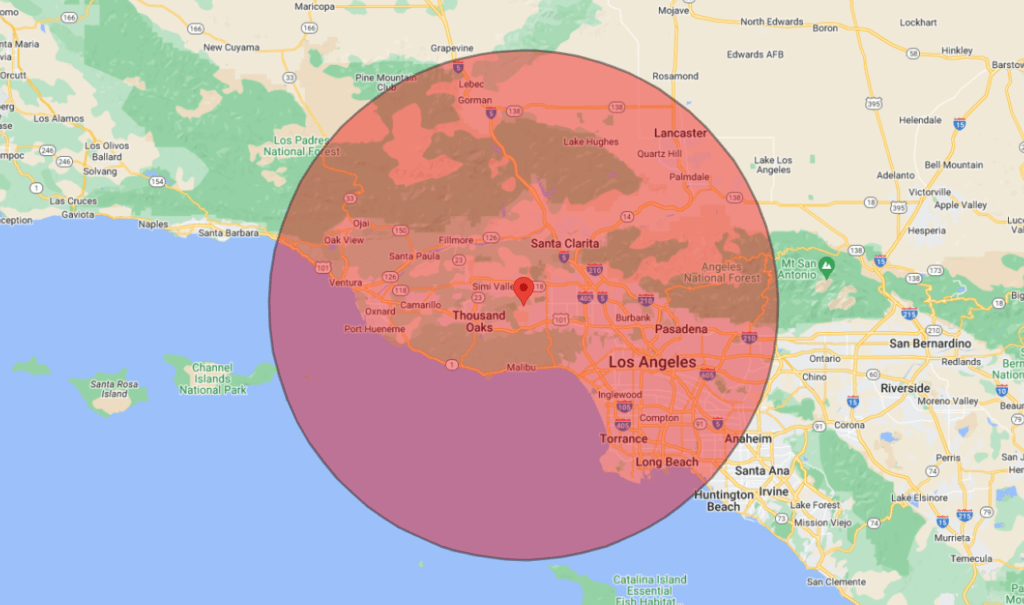Introduction to Tile Flooring: Exploring Porcelain and Ceramic
When you’re diving into a remodel, choosing the right flooring is like picking the base color for your canvas; it sets the foundation. Tile flooring, renowned for its durability and aesthetic versatility, stands as a favored option. Among the vast sea of tiles, porcelain and ceramic tiles shine the brightest. Both might look similar at first glance, but they differ in makeup and performance. Porcelain tiles are celebrated for their resilience and water resistance, making them ideal for rooms with moisture, like bathrooms and kitchens. They’re forged from finer, denser clay and fired at higher temperatures. This process gives porcelain its strength and sleek, polished look. On the flip side, ceramic tiles offer a softer landing for your feet and wallet. They are easier to cut and install, making them a go-to for DIY enthusiasts. Ceramic’s variety in colors and patterns means it can easily adapt to any room’s decor. Choosing between porcelain and ceramic hinges on your needs: crave longevity and moisture resistance, or seeking affordability and ease of installation? As we explore further, keep your lifestyle and remodel goals in mind.
Key Characteristics of Porcelain Tile Flooring
Porcelain tile flooring is a solid pick for those looking to upgrade their space. Why? It’s all about its toughness and versatility. This material is super dense, which means it can handle a lot of foot traffic without showing wear. Think about areas in your home that get a lot of action – kitchens, bathrooms, hallways. Porcelain can take it and still look good.
But that’s not all. Porcelain tiles are less porous than ceramic tiles. What does that mean for you? Less absorption of water. So, if you’re redoing a bathroom or any area that gets wet, porcelain is your ally against moisture. This characteristic also makes it a champ for outdoor use. Rain, snow, or shine, porcelain can handle the extremes of weather without breaking a sweat.
Now, let’s talk heat resistance. Porcelain tiles won’t disappoint you here either. They can withstand high temperatures, making them an ideal choice for kitchen floors where hot pots and pans are the norms.
Color and design? Check and check. Through a process called full-body color, porcelain tiles have consistent color all the way through. This means if they chip, it won’t be as noticeable as it would be with other flooring materials. Plus, with advancements in manufacturing, porcelain tiles can mimic the look of natural stone, wood, and even fabric. This gives you a world of design options to match any décor style.
In summary, porcelain tiles are tough, moisture resistant, good for indoor and outdoor use, heat resistant, and versatile in design. A powerful combination for any remodel.
Understanding Ceramic Tile Flooring: What You Need to Know
When choosing tile flooring for your home remodel, ceramic is a top pick for good reasons. It’s known for being durable and easy to clean, making it a smart choice for bathrooms, kitchens, and high-traffic areas. The basics of ceramic tile can be boiled down to its composition: it’s made from clay that’s been kiln-fired to harden. One thing to remember is that not all ceramic tiles are equal. There are two primary types – glazed and unglazed. Glazed ceramic tiles have a shiny coating that adds extra protection against stains and moisture, making them even easier to maintain. Unglazed tiles, on the other hand, have a natural, rustic look but require more effort to keep clean. They’re better suited for areas where grip is important, like outdoor spaces. In terms of cost, ceramic tiles are typically more wallet-friendly than their porcelain counterparts, offering homeowners a cost-effective way to achieve a beautiful and practical flooring solution. However, they can be prone to chipping and wear over time, especially in high-traffic spots. So, when picking out ceramic tile, think about where it’s going and how much foot traffic that area will see.
Durability Comparison: Porcelain vs. Ceramic Tile Flooring
When it comes to tiling, both porcelain and ceramic tiles are popular choices. But if you’re leaning towards durability as your top priority, you’ll find some differences between the two. Porcelain tiles take the lead in durability. They are created under higher pressure and temperatures. This process makes them denser and less porous than ceramic tiles. What does this mean for you? Porcelain tiles are more resistant to wear and tear. They handle heavy foot traffic better, making them a solid choice for busy areas in your home or commercial spaces. Ceramic tiles, while durable in their own right, don’t quite match up to porcelain’s toughness. They can chip or crack under extreme stress, and they absorb more water. This makes ceramic tiles a better fit for areas with lighter foot traffic or where moisture isn’t a big concern. In essence, when longevity and resilience are key, porcelain tiles are the way to go. However, for projects where budget and ease of installation take precedence, ceramic tiles can offer a practical and attractive solution. Just remember: Your choice will impact your space’s look, feel, and functionality for years to come.
Esthetic Differences: Choosing the Right Look for Your Home
When it comes to giving your home that perfect look, the choice between porcelain and ceramic tile can make all the difference. At first glance, they might seem nearly identical, but there are subtle esthetic differences. Porcelain tiles offer a more uniform appearance and come in a wide range of colors and finishes. They mimic the look of natural stone or hardwood but with a pristine finish that screams high-end. On the other hand, ceramic tiles give off a more artisan vibe. They can feature slight color variations and a more handcrafted texture, making them ideal for a cozy, rustic aesthetic. If your home leans towards a modern, sleek style, porcelain is your go-to. For a warmer, more traditional feel, ceramic tiles might just be what you need. Remember, the right choice will transform your space, elevating it from mere living quarters to a reflection of your personal style.
Cost Analysis: Porcelain and Ceramic Tiles
When considering tile flooring, the cost is a key factor for most. Porcelain and ceramic tiles offer different perks but also come with distinct price tags. Generally, ceramic tiles are more wallet-friendly, usually ringing in between (0.50 to )7 per square foot. They’re budget-friendly because they’re easier to make and have a lower price on installation due to their simpler cutting process. On the other side, porcelain tiles tend to be heftier on the budget, costing around (3 to )10 per square foot. This price jump is because porcelain tiles are denser and more durable, demanding a more complex manufacturing process. What’s more, they need a professional hand for installation, bumping up the cost a bit. So, if money’s tight, ceramic might be your go-to. But if you’re ready to invest in something longer-lasting, porcelain could be worth the extra pennies. Keep in mind, the final bill also gets influenced by the cost of labor in your area and the complexity of your project.
Installation Considerations for Tile Flooring
When thinking about putting in tile flooring, understand that the process isn’t a simple pick and stick job. Porcelain and ceramic tiles might seem similar, but they’ve got their own quirks during installation. First up, porcelain tiles are a bit of a tough cookie. They’re harder than ceramic, making them trickier to cut and install. You’ll need a professional with the right tools to get a clean job done. On the flip side, ceramic tiles are softer. That means they’re easier to cut and install, which might save you some sweat and possibly some cash if you’re doing it yourself or hiring help. Both types of tiles require a well-prepared, clean, and level surface before laying them down. Skipping this step can lead to a wonky floor that’s more likely to crack or lift. Also, consider the weight of porcelain tiles. They’re heavier, so make sure your floor structure can handle the heft without groaning. Lastly, grouting – it’s not just about filling gaps. Choosing the right grout color can either make your tiles pop or blend smoothly. So, whether you’re leaning towards porcelain’s durability or ceramic’s ease, weigh these installation considerations carefully. They might just tip the scales in your remodel decision.
Maintenance and Care: Keeping Your Floors Looking New
Maintaining tile floors isn’t rocket science, but different materials do demand different care strategies. Let’s talk simple, practical ways to keep your floors looking top-notch, whether you choose porcelain or ceramic. First, sweeping or vacuuming your floor regularly is key to prevent dirt from scratching the surface. Easy, right? Secondly, mopping with warm water does wonders, especially for ceramic tiles. If you need to tackle tougher stains, mix a bit of dish soap in there. However, avoid harsh chemicals that can fade the tiles. Porcelain tiles, being denser, can handle stronger cleaners, but it’s usually overkill. Remember, less is more. For those high-traffic areas, place mats or rugs to catch dirt before it hits your beautiful floors. And here’s a pro tip: for both porcelain and ceramic tiles, cleaning up spills immediately can prevent stains and keep your floors in pristine condition. So, whether it’s porcelain or ceramic, stick to a simple cleaning routine, and your floors will thank you by staying beautiful for years.
The Best Areas to Install Porcelain and Ceramic Tiles in Your Home
When redoing your home, choosing the right tile flooring is key. Both porcelain and ceramic tiles have their best fits. Porcelain tiles, being denser and more water-resistant, are perfect for high-moisture areas. Think bathrooms, kitchens, and even outdoor spaces like patios. They can handle spills, humidity, and varying temperatures like champs. On the flip side, ceramic tiles, while still durable, are best suited for areas with less wear and tear. Living rooms, hallways, and bedrooms are great spots for ceramic tiles, offering a cozy feel without the stress of moisture damage. Remember, the choice isn’t just about looks. It’s about functionality and making sure your tiles last where you lay them.
Conclusion: Making the Right Choice for Your Remodel
When it comes down to choosing between porcelain and ceramic tiles for your remodel, think about what matters most to you. If you’re after durability and moisture resistance because you’re tackling a bathroom or kitchen, porcelain is your go-to. It’s tough, handles high traffic well, and isn’t fazed by spills and splashes. But, if your budget is tight and you’re working on areas with less moisture and wear, ceramic tiles can be a savvy choice. They offer a wide range of styles and are easier on the wallet. Remember, the right choice balances what you need, what you love, and what you’re willing to spend. So weigh your options, consider the specifics of your space, and choose tiles that will make your remodel shine for years to come.


